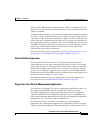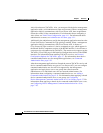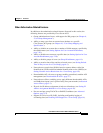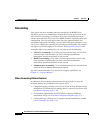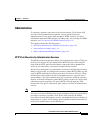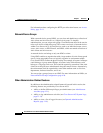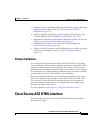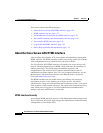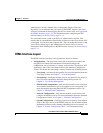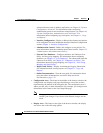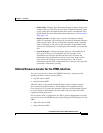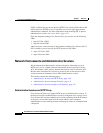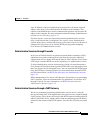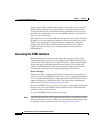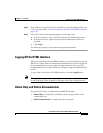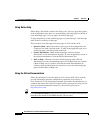
1-27
User Guide for Cisco Secure ACS for Windows Server
78-16592-01
Chapter 1 Overview
Cisco Secure ACS HTML Interface
Administrative sessions timeout after a configurable length of idle time.
Regardless, we recommend that you log out of the HTML interface after each
session. For information about logging out of Cisco Secure ACS, see Logging Off
the HTML Interface, page 1-33. For information about configuring the idle
timeout feature, see Access Policy, page 12-11.
You can enable secure socket layer (SSL) for administrative sessions. This
ensures that all communication between the web browser and Cisco Secure ACS
is encrypted. Your browser must support SSL. You can enable this feature on the
Access Policy Setup page in the Administration Control section. For more
information about enabling SSL for HTML interface security, see Access Policy,
page 12-11.
HTML Interface Layout
The HTML interface has three vertical partitions, known as frames:
• Navigation Bar—The gray frame on the left of the browser window, the
navigation bar contains the task buttons. Each button changes the
configuration area (see below) to a unique section of the Cisco Secure ACS
application, such as the User Setup section or the Interface Configuration
section. This frame does not change; it always contains the following buttons:
–
User Setup—Add and edit user profiles. For more information about the
User Setup section, see Chapter 7, “User Management”.
–
Group Setup—Configure network services and protocols for groups of
users. For more information about the Group Setup section, see
Chapter 6, “User Group Management”.
–
Shared Profile Components—Add and edit network access restriction
and command authorization sets, to be applied to users and groups. For
more information about the Shared Profile Components section, see
Chapter 5, “Shared Profile Components”.
–
Network Configuration—Add and edit network access devices and
configure distributed systems. For more information about the Network
Configuration section, see Chapter 4, “Network Configuration”.
–
System Configuration—Configure system-level features. Four chapters
address this large section of the HTML interface. For information about
fundamental features such as backup scheduling and service controls, see
Chapter 8, “System Configuration: Basic”. For information about



